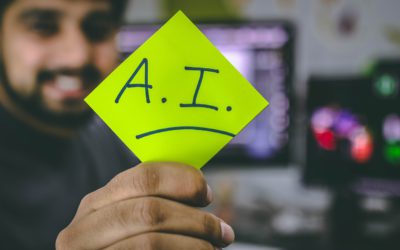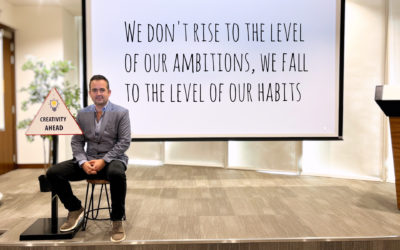What are the Basic Concepts of AI That Modern Leaders Should Understand and Why is it Important for Them to Stay Up to Speed, Even If They Are Not Technical? Estimated reading time: 8 minutes Understanding AI Fundamentals: Essential for informed decision-making. Key...
What are Some of the Best Practices Modern Corporations Can Implement When Designing New Leadership Development Programs and Initiatives Around Innovation, Digital Transformation, and Artificial Intelligence?
Estimated Reading Time: 5 minutes
Best Practices for Leadership Development
- Align programs with business objectives.
- Identify and cultivate key competencies.
- Encourage a culture of continuous feedback.
- Leverage digital tools and AI in program delivery.
Table of Contents
- Align Programs with Business Objectives and Digital Strategy
- Identify and Cultivate Key Competencies
- Personalize Development Pathways
- Emphasize Mentorship and Coaching
- Incorporate Experiential and Cross-functional Learning
- Encourage a Culture of Continuous Feedback and Reflection
- Promote Inclusive and Ethical Leadership
- Leverage Digital Tools and AI in Program Delivery
- Establish Clear Milestones and Track Progress
- Foster a Growth Mindset and Agility
- Conclusion
Align Programs with Business Objectives and Digital Strategy
The foundation of any successful leadership development program is a strong alignment with the organization’s broader business objectives and digital strategy. Leadership development should start with a clear understanding of what the company aims to achieve through its digital transformation and innovation initiatives. This alignment ensures that the competencies developed are directly relevant to the company’s future direction, enabling leaders to drive optimal results and impact business growth. For more on building a leadership development strategy, check out AIHR’s guide.
Identify and Cultivate Key Competencies
Modern leadership demands a unique set of competencies essential for success in today’s dynamic environment. Key skills include:
- Emotional Intelligence: Leaders must possess the ability to navigate complex interpersonal dynamics and cultivate a positive team culture.
- Change Management: As organizations undergo rapid digital transformation, leaders should be capable of guiding their teams effectively through periods of change.
- Strategic and Visionary Thinking: Leaders need to anticipate emerging digital trends and capitalize on opportunities for innovation.
- Digital Literacy and AI Awareness: Understanding the implications of emerging technologies is crucial for leaders to make informed decisions.
For further insights, consider the leadership development topics highlighted by the Powers Resource Center.
Personalize Development Pathways
A one-size-fits-all approach rarely works in leadership development. Assessing current leadership capabilities and designing individualized learning journeys can significantly enhance outcomes. By utilizing tools like 360-degree feedback, organizations can identify strengths and areas for growth, allowing tailoring of development pathways directly to an individual’s needs (AIHR, INTOO).
Emphasize Mentorship and Coaching
To foster the nurturing of new leaders, organizations should implement mentorship programs that connect emerging leaders with seasoned executives who have hands-on experience in innovation and digital initiatives. Furthermore, executive coaching from mentors with a strong background in digital transformation accelerates readiness, equipping them to tackle complex leadership challenges (INTOO).
Incorporate Experiential and Cross-functional Learning
Learning by doing significantly enhances leadership development. Assigning leaders to cross-functional teams or innovation-focused projects provides them with real-world experience and helps them develop the skills needed to navigate ambiguity and drive transformative change. Engaging in digital pilots or collaboration on innovation initiatives not only broadens perspectives but also fosters a collaborative spirit (INTOO).
Encourage a Culture of Continuous Feedback and Reflection
A culture that promotes continuous feedback is essential for leadership growth. Regular feedback, facilitated through tools like 360-degree assessments and leadership workshops, allows leaders to reflect on their approaches and make adjustments in real-time. This practice cultivates self-awareness and adaptability within leaders, ensuring they remain aligned with organizational goals (INTOO).
Promote Inclusive and Ethical Leadership
Incorporating training on inclusive and ethical leadership is more critical than ever, especially given that AI and digital initiatives can inadvertently amplify biases. Leadership development programs must prioritize diversity and ethical decision-making, preparing leaders to navigate tech-driven environments responsibly (Powers Resource Center).
Leverage Digital Tools and AI in Program Delivery
To effectively deliver leadership development programs, modern corporations should embrace digital learning platforms, AI-driven assessments, and virtual collaboration tools. These technologies not only provide scalable and adaptable learning experiences but also mirror the environments in which leaders will operate (AIHR).
Establish Clear Milestones and Track Progress
Setting distinct developmental milestones is key to the success of leadership programs. Regular monitoring and evaluation of leaders’ progress toward acquiring targeted competencies—especially those in innovation and technology—enable organizations to ascertain the effectiveness of their leadership development strategies (INTOO).
Foster a Growth Mindset and Agility
Encouraging a growth mindset among leaders enhances their capacity to adapt swiftly to changes. Organizations should promote experimentation, resilience, and the ability to learn from setbacks, which are foundational behaviors for successful innovation and digital transformation (MIT Sloan, Powers Resource Center).
Conclusion
Leadership development programs tailored for innovation, digital transformation, and AI must transcend traditional management skills. By aligning programs with strategic business goals, emphasizing digital fluency and adaptability, and incorporating experiential learning, organizations can create a resilient leadership pipeline poised to tackle future challenges.
By following these best practices, modern corporations not only develop effective leaders but also foster an environment where innovation thrives, ensuring a competitive edge in the digital landscape.
If you’re looking to enhance your leadership development programs around innovation and digital transformation, consider reaching out. Explore our services at Inspire Limitless, designed to empower leaders in navigating the complexities of the modern business world. For further inquiries, feel free to contact Marc Mekki at marc@inspirelimitless.com or call +971 58 526 7209. Let’s innovate together and inspire limitless possibilities!








